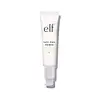What's inside
What's inside
 Key Ingredients
Key Ingredients

 Benefits
Benefits

 Concerns
Concerns

 Ingredients Side-by-side
Ingredients Side-by-side

Dimethicone
EmollientWater
Skin ConditioningGlycerin
HumectantDimethicone Crosspolymer
Emulsion StabilisingMethyl Methacrylate Crosspolymer
Isononyl Isononanoate
EmollientAlcohol Denat.
AntimicrobialVinyl Dimethicone/Methicone Silsesquioxane Crosspolymer
Butylene Glycol
HumectantLauryl PEG-9 Polydimethylsiloxyethyl Dimethicone
Skin ConditioningBoron Nitride
AbsorbentPhenoxyethanol
PreservativePEG/PPG-18/18 Dimethicone
EmulsifyingPerlite
AbsorbentMagnesium Sulfate
Silica Silylate
EmollientCapryloyl Salicylic Acid
ExfoliatingCaprylyl Glycol
EmollientMenthyl Lactate
MaskingLens Esculenta Seed Extract
Skin ProtectingBisabolol
MaskingCI 77891
Cosmetic ColorantDextrin
AbsorbentDimethiconol
EmollientCI 77491
Cosmetic ColorantSynthetic Fluorphlogopite
Eperua Falcata Bark Extract
Skin ProtectingFarnesol
PerfumingEthylhexylglycerin
Skin ConditioningDisodium Stearoyl Glutamate
CleansingAluminum Hydroxide
EmollientTocopherol
AntioxidantDimethicone, Water, Glycerin, Dimethicone Crosspolymer, Methyl Methacrylate Crosspolymer, Isononyl Isononanoate, Alcohol Denat., Vinyl Dimethicone/Methicone Silsesquioxane Crosspolymer, Butylene Glycol, Lauryl PEG-9 Polydimethylsiloxyethyl Dimethicone, Boron Nitride, Phenoxyethanol, PEG/PPG-18/18 Dimethicone, Perlite, Magnesium Sulfate, Silica Silylate, Capryloyl Salicylic Acid, Caprylyl Glycol, Menthyl Lactate, Lens Esculenta Seed Extract, Bisabolol, CI 77891, Dextrin, Dimethiconol, CI 77491, Synthetic Fluorphlogopite, Eperua Falcata Bark Extract, Farnesol, Ethylhexylglycerin, Disodium Stearoyl Glutamate, Aluminum Hydroxide, Tocopherol
Water
Skin ConditioningCannabis Sativa Seed Oil
EmollientGlycerin
HumectantStearic Acid
CleansingButyrospermum Parkii Butter
Skin ConditioningCaprylic/Capric Triglyceride
MaskingCetearyl Alcohol
EmollientGlyceryl Stearate Se
EmulsifyingSimmondsia Chinensis Seed Oil
EmollientHelianthus Annuus Seed Oil
EmollientDaucus Carota Sativa Root Extract
Skin ConditioningDaucus Carota Sativa Seed Oil
EmollientAscorbyl Palmitate
AntioxidantBeta-Carotene
Skin ConditioningSodium Hyaluronate
HumectantSorbitan Stearate
EmulsifyingPhenoxyethanol
PreservativeCeteareth-20
CleansingSynthetic Fluorphlogopite
Caprylyl Glycol
EmollientEthylhexylglycerin
Skin ConditioningHydroxyethylcellulose
Emulsion StabilisingBHT
AntioxidantDisodium EDTA
Water, Cannabis Sativa Seed Oil, Glycerin, Stearic Acid, Butyrospermum Parkii Butter, Caprylic/Capric Triglyceride, Cetearyl Alcohol, Glyceryl Stearate Se, Simmondsia Chinensis Seed Oil, Helianthus Annuus Seed Oil, Daucus Carota Sativa Root Extract, Daucus Carota Sativa Seed Oil, Ascorbyl Palmitate, Beta-Carotene, Sodium Hyaluronate, Sorbitan Stearate, Phenoxyethanol, Ceteareth-20, Synthetic Fluorphlogopite, Caprylyl Glycol, Ethylhexylglycerin, Hydroxyethylcellulose, BHT, Disodium EDTA
 Reviews
Reviews

Ingredients Explained
These ingredients are found in both products.
Ingredients higher up in an ingredient list are typically present in a larger amount.
Caprylyl Glycol is a humectant and emollient, meaning it attracts and preserves moisture.
It is a common ingredient in many products, especially those designed to hydrate skin. The primary benefits are retaining moisture, skin softening, and promoting a healthy skin barrier.
Though Caprylyl Glycol is an alcohol derived from fatty acids, it is not the kind that can dry out skin.
This ingredient is also used as a preservative to extend the life of products. It has slight antimicrobial properties.
Learn more about Caprylyl GlycolEthylhexylglycerin (we can't pronounce this either) is commonly used as a preservative and skin softener. It is derived from glyceryl.
You might see Ethylhexylglycerin often paired with other preservatives such as phenoxyethanol. Ethylhexylglycerin has been found to increase the effectiveness of these other preservatives.
Glycerin is already naturally found in your skin. It helps moisturize and protect your skin.
A study from 2016 found glycerin to be more effective as a humectant than AHAs and hyaluronic acid.
As a humectant, it helps the skin stay hydrated by pulling moisture to your skin. The low molecular weight of glycerin allows it to pull moisture into the deeper layers of your skin.
Hydrated skin improves your skin barrier; Your skin barrier helps protect against irritants and bacteria.
Glycerin has also been found to have antimicrobial and antiviral properties. Due to these properties, glycerin is often used in wound and burn treatments.
In cosmetics, glycerin is usually derived from plants such as soybean or palm. However, it can also be sourced from animals, such as tallow or animal fat.
This ingredient is organic, colorless, odorless, and non-toxic.
Glycerin is the name for this ingredient in American English. British English uses Glycerol/Glycerine.
Learn more about GlycerinPhenoxyethanol is a preservative that has germicide, antimicrobial, and aromatic properties. Studies show that phenoxyethanol can prevent microbial growth. By itself, it has a scent that is similar to that of a rose.
It's often used in formulations along with Caprylyl Glycol to preserve the shelf life of products.
Synthetic Fluorphlogopite is the synthethic version of mica. It consists of fluorine, aluminum and silicate.
Synthetic Fluorphlogopite is used to add volume to products.
It is considered non-irritating on the skin.
Learn more about Synthetic FluorphlogopiteWater. It's the most common cosmetic ingredient of all. You'll usually see it at the top of ingredient lists, meaning that it makes up the largest part of the product.
So why is it so popular? Water most often acts as a solvent - this means that it helps dissolve other ingredients into the formulation.
You'll also recognize water as that liquid we all need to stay alive. If you see this, drink a glass of water. Stay hydrated!
Learn more about Water